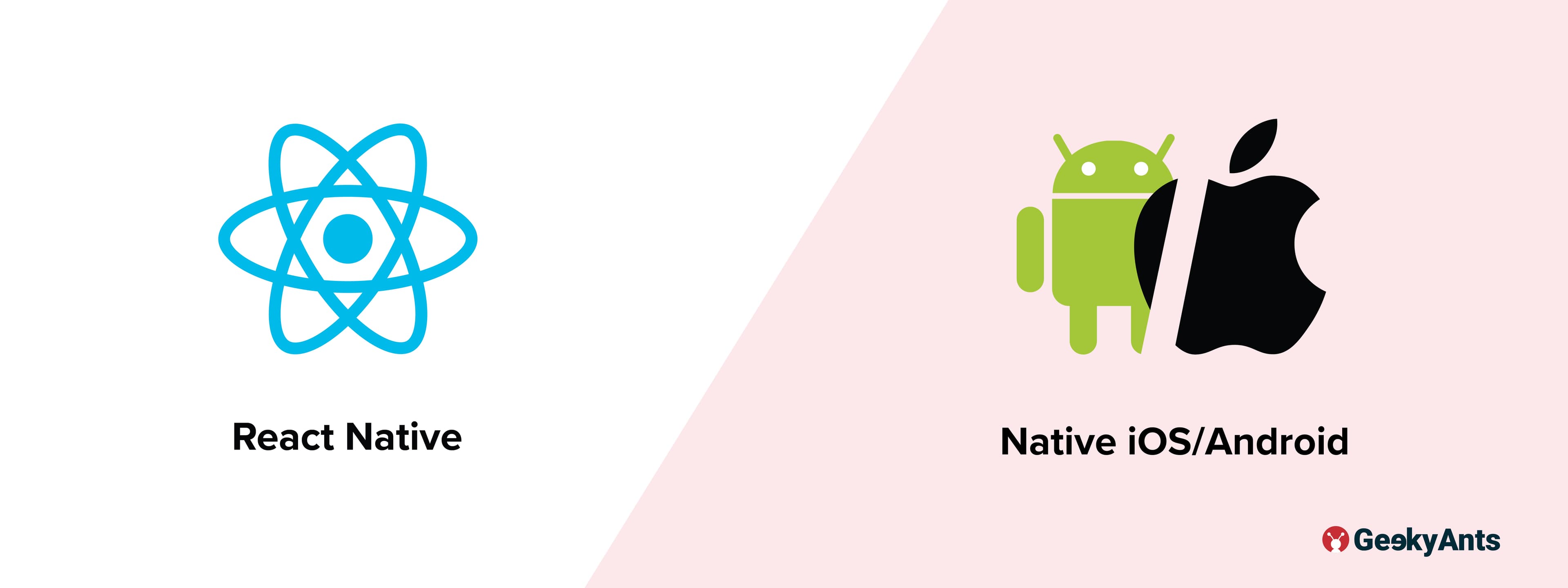Table of Contents
Why Use React Native Instead of Native iOS/Android for Building Your Mobile App in 2023
Author

Subject Matter Expert

Date

Book a call
Introduction
With the growing popularity of mobile applications, the need to develop apps that can be built quickly and run on multiple platforms has also increased. The introduction of the React Native UI framework has certainly given traditional native languages a run for their money when it comes to building cross-platform mobile apps.
React Native has a current market share of 38% and is the second most popular framework for app development. Facebook, Microsoft apps, PlayStation, NFL, Puma, Pinterest, Walmart, and Tesla, among others, have already used React Native to develop stunning apps. This begs the question– should mobile developers use React Native instead of native iOS/Android? This article will try to find the answer to this question through a competitive analysis of these technologies.
React Native and Native – Features and Differences
Created by Meta, React Native keeps speed, flexibility, and ease of usage at the forefront. React Native is JavaScript-based and creates stunning and interactive user interfaces with a native feel and experience. The reusable codebase performs across multiple platforms.
Native apps, however, are built for specific platforms using different programming languages. This means developers have to build an Android app using Java or Kotlin, and an iOS app using Swift or Objective-C. This is great for building apps intended for a single platform. However, multi-platform applications need separate development teams with expertise in different programming languages.
A quick look at their features will help us better understand what React Native and Native are and how they function.
Development time and cost
Using React Native helps save precious development time and costs. The hot reloading and live reloading features keep the app constantly running, save the state, and automatically reload the app with every code alteration.
In native app development, separate development teams for Android and iOS make the app development process long and complicated. Code changes and rewrites take significant time during development, making it a costly process.
Maintenance and updates
With React Native apps, you just need to update and resolve bugs on one platform. Strong community support also ensures seamless updates and troubleshooting.
Two separate native apps require separate updates, maintenance, bug fixes, and maintenance support, which makes the process complex and doubles the cost and work involved. Native apps also need to be updated constantly.
Learning curve and ease of use
Using JavaScript – the most commonly used programming language in the world– gives React Native an edge over native apps. It is easy to learn for web developers with good HTML, CSS, and JavaScript knowledge.
Native programming languages for Android and iOS, such as Kotlin, Java, or Swift, have separate documentation and rules. Developers who can code in these languages are scarce to find and expensive to employ.
User interface
React Native renders the app’s interface into native-like components with native APIs and modules. This makes the app experience similar to natively built Android or iOS apps. The average user will be unable to tell the difference between the two.
Native apps do have the upper hand when it comes to superior user interfaces and native app experiences. However, the average user will generally not be able to tell whether an app is Swift or JavaScript-based.
Flexibility and cross-platform development
React Native is multi-platform by default. You can develop apps for Android, iOS, Windows, macOS, and the web using a single JavaScript codebase. Only minor native improvements and additions dramatically cut down development costs and time. Planning, testing, deployment, and associated logistics are also easier to handle.
Native apps are platform-specific and require separate development teams. This is because the source code and development processes are completely different for different target platforms. This means a significant rise in development cost for two separate apps for Android and iOS–by about 35% to 40%. React Native is thus a clear winner here.
Some other factors to consider
Additional features such as active and ever-growing community support and regular open-source contributions make React Native perfect for quickly developing straightforward mobile apps and MVPs. Integrating React Native into existing native apps is also an uncomplicated process.
While native apps offer superior performance and native app development languages are strongly typed and secure, the logistics and complicated development processes make native apps a less viable option for app developers.
When to Choose React Native for Building Your Mobile App?
- For companies looking to build straightforward mobile apps without a particular focus on native user experience, React Native is the way to go.
- While native development works great for single-platform or AR and IoT-based apps, they come with high development costs and lengthy development time.
- React Native is an excellent choice for startups and product owners trying to get their app to market on time and reach target audiences while keeping it budget-friendly.
- The plethora of high-profile brands already using React Native for their apps is a further testimonial to its definite advantages.
- Companies such as Bloomberg, Instagram, Skype, Airbnb, and Wix, among others, have cited factors such as code reusability, flexibility, quicker app delivery, and efficiency for using React Native.
React Native App Development Partners You Can Trust
Developing an application from scratch is a complex and resource-intensive process that requires considerable planning and clear goals. The cost of developing a mobile app primarily depends on the app and design complexity, features, the framework used, and app updates and maintenance. Partnering with a mobile app development company with significant experience building React Native and Native apps would help you navigate complex processes and figure out a framework that best fits your requirements.
With 150+ clients and 200+ React Native applications delivered to clients worldwide, GeekyAnts is a design and development studio located in San Francisco, CA, with offices in India and the UK. The company is well-known as the creator of NativeBase, the most popular React Native UI library built to date. Their core React Native contributors and expert developers have made contributions to 10+ open-source React Native products. With 17+ years of app development experience, GeekyAnts has collaborated with startups and industry leaders to create groundbreaking digital products.
Dive deep into our research and insights. In our articles and blogs, we explore topics on design, how it relates to development, and impact of various trends to businesses.


